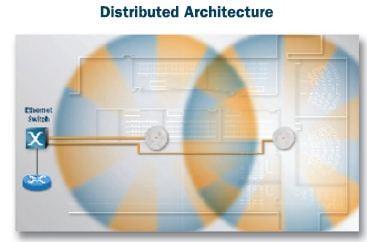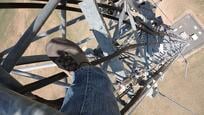Wireless connectivity and wireless mobility has become a way of life. Today most everyone is carrying a mobile device and expects to have high speed wireless bandwidth everywhere they go. In many cases, people now have more than one wireless device carrying around their smart phone and their tablet device (e.g. iPad). A major problem in the wireless industry is when wireless networks get overloaded due to the high density of users on a local network. This problem becomes even greater when you have events that have thousands of people all trying to get online with their wireless devices all at the same time. Cellular networks can get slammed. This is why many carriers try and off load people onto Wi-Fi hotspots in order to free up the demand for their 3G / 4G networks.
A rule of thumb is to have a max capacity of 40 active Wi-Fi users on an access point at any given time. Now many manufactures have pushed that limit by using various techniques like timing algorithms, but as a general rule for high performance 40 is a good number. In high density wireless applications the thing to remember is that even if everyone is not trying to use their wireless handheld device, the devices still beacon the network. This causes a lot of traffic and overhead to an access point.
So what happens when you put thousands of people in a small area all trying to get a wireless Ethernet bridge using Wi-Fi connectivity? If you do the math you would have to add a lot of wireless access points in an area to handle the load. With Wi-Fi 802.11b/g 2.4GHz there are only three non-overlapping channels. In Wi-Fi 802.11a there are 8+ depending on the channel widths. Most all devices will try and use the 2.4GHz 802.11b/g Wi-Fi first by default. With only three non overlapping channels it becomes difficult to put a lot of AP’s next to each other in a small place, especially if the AP’s are using omni directional antennas. You have to do strict channel and power planning.
Recently, we were asked to provide Wi-Fi for over 3000 users in an area of 100ft x 500ft for an outdoor high profile event party for SXSW. We were able to not only provide Wi-Fi for that many users but where able to provide high speed seemly roaming without any problems. How did we do it?
First, we brought in a 300Mbps full duplex wireless backhaul to the event from a location across town using microwave communication. We didn’t have direct line of sight so we used a rooftop to create a wireless repeater. We did a point to point wireless shot from the main building to the wireless repeater and then another point to point wireless bridge down to the outdoor event. We used 24GHz SAF Tehnika Lumina radios for the microwave communication.
For the Wi-Fi at the event we choose to use a Wi-Fi array system by Xirrus. Xirrus arrays use multiple AP’s with sector antennas to distribute the Wi-Fi signals much like a cellular site design. This allows for greater output and better RF channel control. With the Xirrus system we were also able to force devices that had 802.11a 5GHz capability onto a 5GHz AP to free up the demand of the 802.11b/g 2,4GHz AP’s. Each Xirrus array has its own built in controller which communicates with every other array in the system. This was very effective and saved on costs of having to have an expensive traditional Wi-Fi controller on site. We weren’t able to cable each array directly so in some cases we used a millimeter wave solution to create a wireless Ethernet bridge between arrays.

The crowd loved it and it was amazing to be able to have wireless roaming capability on my iPad while Skyping my wife who couldn’t attend the event!





